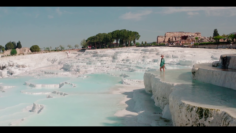Turkish Bath (Hammam)
Although its foundations were laid during the Roman era, when the term “hammam culture” is mentioned worldwide today, the Turkish bath comes to mind.
Turkish baths, hidden under the embroidered cover of time and adorned with precious traces of centuries, emerged as a result of the Turks’ acceptance of Islam and their meticulous implementation of Islam’s principles on cleanliness. This heritage, carried from the past to the present, is one of the finest examples of a rich cultural texture.
A captivating feature of Turkish baths is their unique structures and architecture. These structures, which have a very old history, became particularly widespread in Ottoman Era and the number of baths in Istanbul alone approached 500 during a span of five centuries. Accordingly, the architecture of Turkish baths was greatly influenced by Ottoman architecture and great attention was paid to architectural elegance.
Spending time in a Turkish bath allows high humidity levels to relax and open pores on the skin, preparing it for cleansing. Additionally, the humidity and heat in baths increase sweating and helps remove toxins.
Afterward, a bath attendant, known as “tellak”, uses a scrub mitt (kese) to scrub the skin rigorously, effectively ridding the body of dirt and dead skin layers.
Following this phase, people use peshtemals (loincloths) with a thin and light texture to dry themselves, while they prefer clogs made of wooden material to move safely on hammam floors. These three elements are integral parts of Turkish bath culture.
Turkish bath is more than just a place for physical cleansing. It turns into a place where friendships flourish, women gather to chat, even traditional ceremonies for wedding preparation take place and a place where the past and the future embrace. This ancient tradition still continues today, preserving its character as an important cultural heritage and tourist attraction, attracting both locals and tourists in historic streets and tourist areas.















